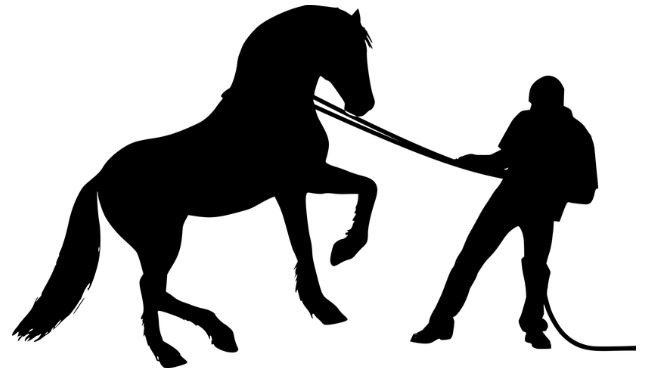The United States Post Office released its first general issue postage stamp on July 1, 1847, with a five-cent stamp honoring Benjamin Franklin, the Continental Congress’s first postmaster general, and a ten-cent stamp honoring George Washington. In 1873, the first postal cards were released in the United States, followed by commemorative stamps in 1893 and airmail stamps in 1918.
The Rough Riders 3 Cent Stamp’s Background
When the battleship Maine exploded in Havana Harbor in February 1898, Theodore Roosevelt, a flamboyant character with a desire for adventure and a competitive spirit, was working as Assistant Secretary of the Navy. Ten days later, Roosevelt’s boss was knocked out for four hours, making him Acting Secretary. Roosevelt resigned his position, raised a volunteer cavalry battalion, and moved it to Cuba to be in the middle of the action when McKinley declared war in 1898. Roosevelt wasted little time in preparing the Navy for war, acquiring ammunition and supplies, consulting experts, and seeking Congress for the ability to enlist sailors, all of which helped the US enter the Spanish-American War.
Roosevelt quit his office upon America’s declaration of war in order to raise a force of volunteers to fight. He gathered cowboys from the West and Ivy League buddies from New York to form the First United States Volunteer Cavalry Regiment, dubbed the “Rough Riders,” which landed in Daiquiri, Cuba, on June 23, 1898, and faced the Spanish forces in the Battle of Las Grasim’s. They broke through the Spanish lines, forcing the enemy to retreat sooner than expected.
The Rough Riders marched to San Juan Heights, on the outskirts of Santiago. After being encouraged by Roosevelt’s horseback riding, the Rough Riders claimed Kettle Hill. The Spanish had given up control of Cuba to the Americans by August. The Rough Riders were disbanded the next month, but their valor was not forgotten. The Rough Riders drew widespread notice, and the future president was acclaimed as a hero.
The United States First Volunteer Cavalry, Roosevelt’s Rough Riders, was disbanded after the troops said their final goodbyes. Colonel Roosevelt gave them a short address before they returned to their homes across the country, commending their efforts, expressing his deep pride, and reminding them that, despite being heroes, they would have to reintegrate into normal society and work as hard as everyone else. Many of the men were unable to return to the employment they had before to joining the war effort. Some were unable to work due to illness or injury. Many wealthy supporters contributed money to help the poor veterans, but many were too proud to receive.
Honoring the Rough Riders
Congressman Richard F. Harless of Arizona sponsored a resolution to Congress on January 21, 1948, requesting that the Rough Riders be honored with a stamp. The stamp was published on October 27, 1948, in Prescott, Arizona, in honor of Theodore Roosevelt (1858-1919), who organized the 1st US Volunteer Cavalry there in 1898.
Captain William Owen “Bucky” O’Neill (1860-1898), who was killed in combat while leading troop A at the Battle of San Juan Hill on July 1, 1898, is shown in the stamp’s contentious design, as stipulated in the resolution. The statue stood outside the Yavapai County courthouse at Prescott’s north entrance.
Stamp’s Design
The stamp depicts a statue erected in O’Neill’s honor by Gutzon Borglum, Mount Rushmore’s primary sculptor. The statue is located at the Yavapai County Courthouse’s north entrance in Prescott. There was debate at the time about why a stamp honoring the Rough Riders didn’t include Roosevelt, the group’s most famous member. The stamp, however, was first issued on October 27, 1948, on Roosevelt’s 90th birthday.
O’Neill was a Prescott journalist who also served in the Arizona National Guard. He went on to become mayor. O’Neill was part of a four-man posse that apprehended four train robbers in 1889. When the Spanish-American War broke out, he helped create the Rough Riders’ volunteer unit and was elected captain of Troop A. In a strange twist, one of the train thieves he had apprehended nine years before, William Sterin, served as a sergeant in O’Neill’s company under the name “Henry Nash. “O’Neill was killed in action during the Spanish American War. O’Neill’s death was later described by Roosevelt as “the most catastrophic loss that I and the regiment could have suffered.”
The stamps’ omission of a tribute to the Rough Riders’ originator, Theodore Roosevelt, was a topic of disagreement among critics. “Rough Riders” will always be associated with this renowned figure in the minds of the American people.
Cost of the Rough Rider 3 Cents Stamp
Stamp collecting became a widespread hobby, with everyone from schoolchildren to presidents. Franklin D. Roosevelt was known for his stamp collection, which he began when he was eight years old. He said he liked stamps because of their geographic and historical significance. In 1946, he had over a million stamps in his collection. Visitors to the White House frequently gave him stamps while he was President.
The three-cent Rough Riders US Postage collectible stamp costs between $12.95 and $0.99.
- Rough Riders block of four US postal stamps from 1948. – $4.99
- Vintage U.S. Postage 3 Cent Stamp Rough Riders Stamp (Teddy Roosevelt) – $1.00
- Rough Riders / 50 Years / 3 Cents / SC973 / US Postage Stamp / Used – $2.28
- Block of 50 Years Rough Riders / 3 Cents / SC973 / US Postage Stamp /- $2.50
- Rough Riders Sheet of Fifty 3 Cent Postage Stamps Scott 973 – $12.95
- 1948 Rough Riders 3 Cent U.S. Block of 4 Stamps – $1.00
- Rough Riders 3 cents US stamp, Scott 973, MNH -1.35
- 973 * ROUGH RIDERS * U.S. Postage Stamp MNH – $0.99
